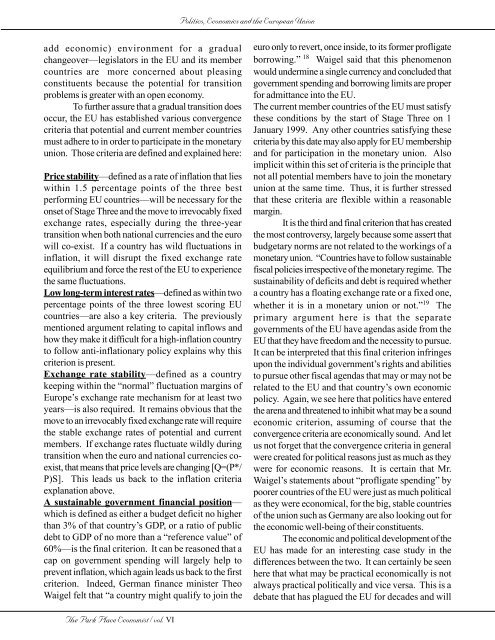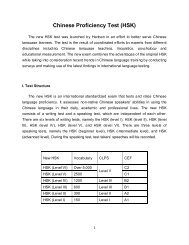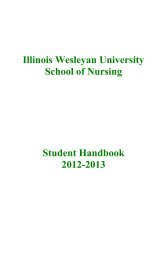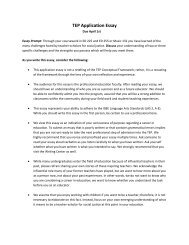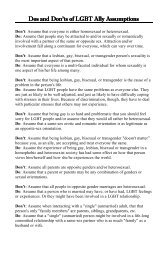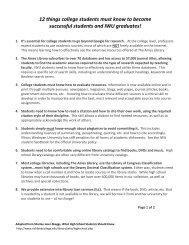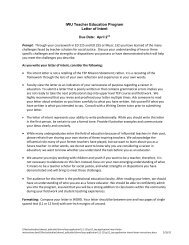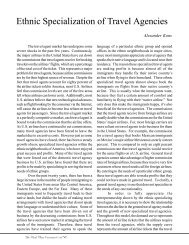Politics, Economics and the European Union
Politics, Economics and the European Union
Politics, Economics and the European Union
Create successful ePaper yourself
Turn your PDF publications into a flip-book with our unique Google optimized e-Paper software.
<strong>Politics</strong>, <strong>Economics</strong> <strong>and</strong> <strong>the</strong> <strong>European</strong> <strong>Union</strong><br />
add economic) environment for a gradual<br />
changeover—legislators in <strong>the</strong> EU <strong>and</strong> its member<br />
countries are more concerned about pleasing<br />
constituents because <strong>the</strong> potential for transition<br />
problems is greater with an open economy.<br />
To fur<strong>the</strong>r assure that a gradual transition does<br />
occur, <strong>the</strong> EU has established various convergence<br />
criteria that potential <strong>and</strong> current member countries<br />
must adhere to in order to participate in <strong>the</strong> monetary<br />
union. Those criteria are defined <strong>and</strong> explained here:<br />
Price stability—defined as a rate of inflation that lies<br />
within 1.5 percentage points of <strong>the</strong> three best<br />
performing EU countries—will be necessary for <strong>the</strong><br />
onset of Stage Three <strong>and</strong> <strong>the</strong> move to irrevocably fixed<br />
exchange rates, especially during <strong>the</strong> three-year<br />
transition when both national currencies <strong>and</strong> <strong>the</strong> euro<br />
will co-exist. If a country has wild fluctuations in<br />
inflation, it will disrupt <strong>the</strong> fixed exchange rate<br />
equilibrium <strong>and</strong> force <strong>the</strong> rest of <strong>the</strong> EU to experience<br />
<strong>the</strong> same fluctuations.<br />
Low long-term interest rates—defined as within two<br />
percentage points of <strong>the</strong> three lowest scoring EU<br />
countries—are also a key criteria. The previously<br />
mentioned argument relating to capital inflows <strong>and</strong><br />
how <strong>the</strong>y make it difficult for a high-inflation country<br />
to follow anti-inflationary policy explains why this<br />
criterion is present.<br />
Exchange rate stability—defined as a country<br />
keeping within <strong>the</strong> “normal” fluctuation margins of<br />
Europe’s exchange rate mechanism for at least two<br />
years—is also required. It remains obvious that <strong>the</strong><br />
move to an irrevocably fixed exchange rate will require<br />
<strong>the</strong> stable exchange rates of potential <strong>and</strong> current<br />
members. If exchange rates fluctuate wildly during<br />
transition when <strong>the</strong> euro <strong>and</strong> national currencies coexist,<br />
that means that price levels are changing [Q=(P*/<br />
P)S]. This leads us back to <strong>the</strong> inflation criteria<br />
explanation above.<br />
A sustainable government financial position—<br />
which is defined as ei<strong>the</strong>r a budget deficit no higher<br />
than 3% of that country’s GDP, or a ratio of public<br />
debt to GDP of no more than a “reference value” of<br />
60%—is <strong>the</strong> final criterion. It can be reasoned that a<br />
cap on government spending will largely help to<br />
prevent inflation, which again leads us back to <strong>the</strong> first<br />
criterion. Indeed, German finance minister Theo<br />
Waigel felt that “a country might qualify to join <strong>the</strong><br />
euro only to revert, once inside, to its former profligate<br />
borrowing.” 18 Waigel said that this phenomenon<br />
would undermine a single currency <strong>and</strong> concluded that<br />
government spending <strong>and</strong> borrowing limits are proper<br />
for admittance into <strong>the</strong> EU.<br />
The current member countries of <strong>the</strong> EU must satisfy<br />
<strong>the</strong>se conditions by <strong>the</strong> start of Stage Three on 1<br />
January 1999. Any o<strong>the</strong>r countries satisfying <strong>the</strong>se<br />
criteria by this date may also apply for EU membership<br />
<strong>and</strong> for participation in <strong>the</strong> monetary union. Also<br />
implicit within this set of criteria is <strong>the</strong> principle that<br />
not all potential members have to join <strong>the</strong> monetary<br />
union at <strong>the</strong> same time. Thus, it is fur<strong>the</strong>r stressed<br />
that <strong>the</strong>se criteria are flexible within a reasonable<br />
margin.<br />
It is <strong>the</strong> third <strong>and</strong> final criterion that has created<br />
<strong>the</strong> most controversy, largely because some assert that<br />
budgetary norms are not related to <strong>the</strong> workings of a<br />
monetary union. “Countries have to follow sustainable<br />
fiscal policies irrespective of <strong>the</strong> monetary regime. The<br />
sustainability of deficits <strong>and</strong> debt is required whe<strong>the</strong>r<br />
a country has a floating exchange rate or a fixed one,<br />
whe<strong>the</strong>r it is in a monetary union or not.” 19 The<br />
primary argument here is that <strong>the</strong> separate<br />
governments of <strong>the</strong> EU have agendas aside from <strong>the</strong><br />
EU that <strong>the</strong>y have freedom <strong>and</strong> <strong>the</strong> necessity to pursue.<br />
It can be interpreted that this final criterion infringes<br />
upon <strong>the</strong> individual government’s rights <strong>and</strong> abilities<br />
to pursue o<strong>the</strong>r fiscal agendas that may or may not be<br />
related to <strong>the</strong> EU <strong>and</strong> that country’s own economic<br />
policy. Again, we see here that politics have entered<br />
<strong>the</strong> arena <strong>and</strong> threatened to inhibit what may be a sound<br />
economic criterion, assuming of course that <strong>the</strong><br />
convergence criteria are economically sound. And let<br />
us not forget that <strong>the</strong> convergence criteria in general<br />
were created for political reasons just as much as <strong>the</strong>y<br />
were for economic reasons. It is certain that Mr.<br />
Waigel’s statements about “profligate spending” by<br />
poorer countries of <strong>the</strong> EU were just as much political<br />
as <strong>the</strong>y were economical, for <strong>the</strong> big, stable countries<br />
of <strong>the</strong> union such as Germany are also looking out for<br />
<strong>the</strong> economic well-being of <strong>the</strong>ir constituents.<br />
The economic <strong>and</strong> political development of <strong>the</strong><br />
EU has made for an interesting case study in <strong>the</strong><br />
differences between <strong>the</strong> two. It can certainly be seen<br />
here that what may be practical economically is not<br />
always practical politically <strong>and</strong> vice versa. This is a<br />
debate that has plagued <strong>the</strong> EU for decades <strong>and</strong> will<br />
The Park Place Economist / vol. VI


